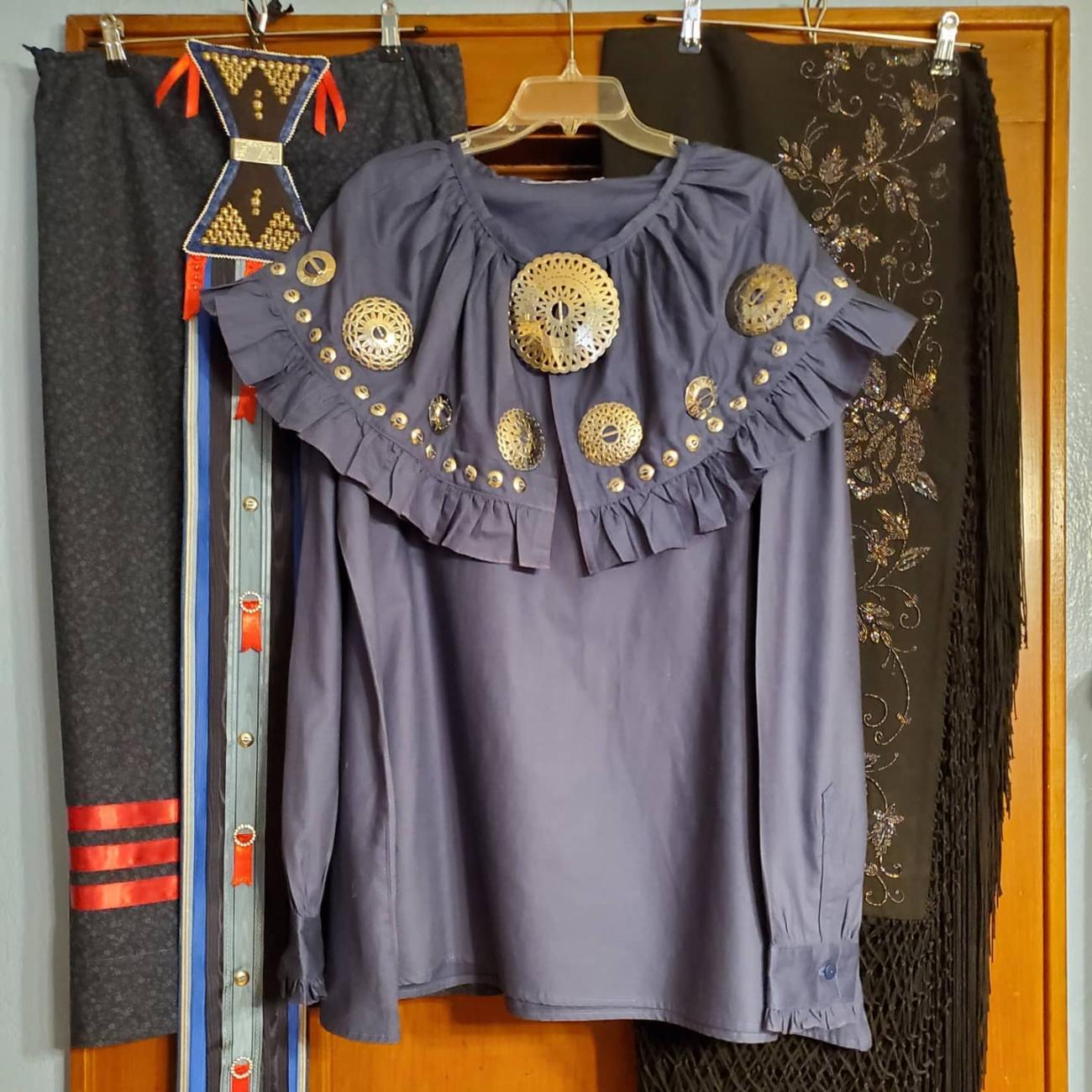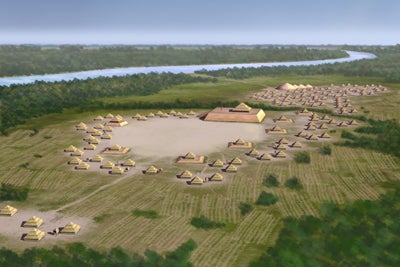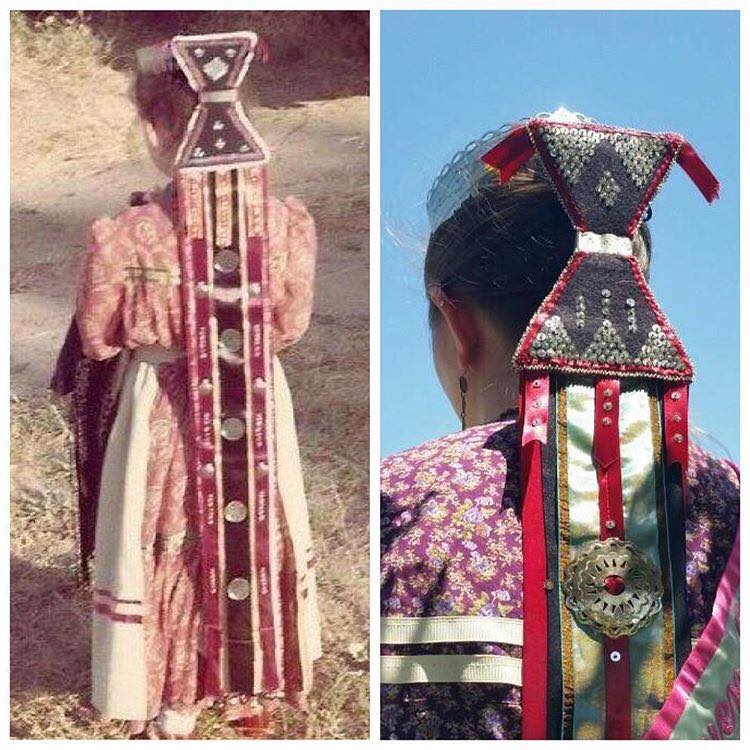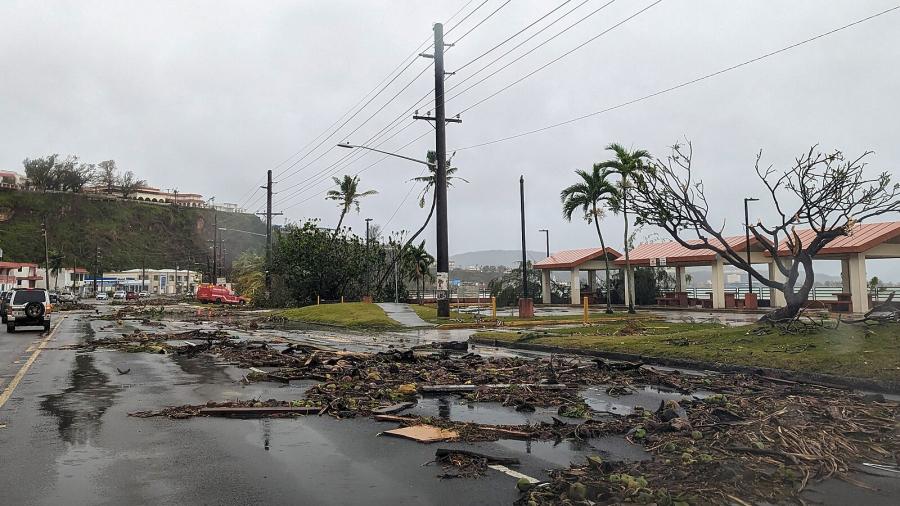
A devastatingly hot summer has tested the limits of all lifeforms in the southwestern state of Arizona, from saguaro cacti shriveling under the unrelenting sun to the low-income and unhoused—along with many urban Arizonans of all socioeconomic backgrounds—struggling to cool their bodies and avoid heat exhaustion. Yet, while the link between consistently worsening temperatures and climate change has made the daily news, another struggle that similarly threatens lifeforms and Indigenous relationships to sacred homelands rages on. This struggle has not attracted the media attention it deserves, even though it is also a story that sits at the heart of climate change and climate action.
On the lands of the San Carlos Apache in southeastern Arizona, a fight continues between Apache Tribal members and two multinational mining giants over the proposed extraction of copper. At stake is the site of Chi’chil Biłdagoteel, known in English as Oak Flat, which has, and continues to, represent a sacred landscape for the Apache. Apart from Oak Flat’s role as an environment for prayer and medicinal plant gathering, this landscape is particularly important as a site where young Apache women take part in coming-of-age ceremonies. These significant cultural and spiritual relationships that Apache people actively maintain with the living landscape of Chi’chil Biłdagoteel make it difficult for many Apaches to accept the proposed plans by Resolution Copper to build one of the largest copper mines in the world. Adding to the gravity of the situation is the fact that the proposed block cave mining technique to access the copper ore would obliterate the mountain, turning it into a two-mile-wide crater on ecologically diverse federal lands that are part of the Tonto National Forest.
What would appear at first glance as an ordinary struggle pitting environmentalists and Indigenous communities against extractive industries is not as straightforward as it seems. Based on increasing political and popular support for what has been labeled “green” energy transitions (renewable energy and technology that moves away from carbon), certain metals such as copper are now highly sought after. These transition metals, including copper, lithium, cobalt, and nickel, are deemed “critical” because they are required components in manufacturing batteries for electric vehicles and related technologies. As countries throughout Europe and the United States race against China for dominance in the electric vehicle market, the conversations and plans around obtaining the supplies of necessary minerals have become more urgent. Yet in the eyes of numerous Indigenous communities, as well as an increasing number of environmental scientists, these plans are fraught with risks and unacceptable consequences.
As a result of the threats to Oak Flat, members of the San Carlos Apache Tribal community created the Apache Stronghold, a nonprofit organization that fights for Oak Flat and Apache relationships with this sacred site. Apache Stronghold has been the leading party in a lawsuit against the U.S. government aimed at preventing the transfer of this land, which has immense religious and cultural importance to Apache people, to the mining companies. The lawsuit hinges on the potential violation of the Religious Freedom Restoration Act and points to a key contradiction long embedded in the U.S. legal and political system, that while religious liberty is a foundational American value, religious equality has not always been extended to Tribal Nations and their traditional beliefs—the first religions of this land.
Legal scholar Walter Echo-Hawk (Pawnee) describes the impetus for the American Indian Religious Freedom Act Amendments of 1994 as coming from “a legal system that allowed the government to infringe upon and destroy Tribal religions in ways the courts would never tolerate for other religions.” And while the struggle at Oak Flat points to the deep, sustained relationships Indigenous Peoples have always had to the lands where copper can be found, many Indigenous Peoples have also long had significant relationships to the copper itself.

Artist rendition of Spiro Mounds.
Sustained Relationships to Copper, Beginning from Spiro Mounds
In Oklahoma Indian Country, one does not need to travel far in any direction to find strong relationships between Native people and copper. This is true whether considering the present-day importance of copper in contemporary jewelry making among southeastern Tribes such as the Cherokee or Muscogee (Creek), or the historical importance of copper as part of trade, ritual, and adornment among numerous other Native Nations. Beginning with the Caddos, one of the original Tribal Nations to have called present-day Oklahoma part of its traditional homeland area, the story of connections to copper can be seen as layered, complex, and enduring. A critical set of perspectives on these traditional and present-day relationships to copper comes through the voice of Tracy Newkumet (Caddo/Delaware), a highly accomplished traditional regalia maker and artist with decades of experience across sewing, beadwork, jewelry making, and clothing design.

Caddo artist Tracy Newkumet wearing her regalia. Photo by Tracy Newkumet.
Like many Caddo people, Newkumet’s family looks to the historically significant mound site of Spiro in present-day southeastern Oklahoma as central to the rich cultural legacy handed to them by their Caddoan ancestors. Between approximately 1000-1450 AD, Spiro was the seat of a highly sophisticated cultural community that was closely linked to trade through the Arkansas River, and by extension, the Mississippi River. As evidenced from the multitude of copper cultural artifacts found within the Spiro mounds, copper played a central role for the community at Spiro, particularly as seen in the diverse and intricate copper headdresses, repoussé plates, ear spools, axes, needles, and beads. In certain cases, objects such as masks and rattles were covered in copper that was pounded over it. Many of the copper repoussé plates were adorned with dancers in specific regalia, hawks, and unique geometric motifs, among other designs.
The ingenuity shown in the diverse array of uses for copper is a testament to the traditional value of the metal for the people of Spiro, both in terms of the practicalities of everyday life, as well as in use for ceremonial and spiritual functions. Newkumet speaks to her understanding of copper’s place in the lives of her ancestral and present relations, categorizing it as “a ceremonial relationship to copper and its many cultural uses, instead of viewing the metal itself as sacred.” She continues, “The more [copper] metal we wear, the more we show our ability to put extra time, resources, and talent into how we present ourselves. It’s not like, ‘look how wealthy I am’ in a capitalistic sense, but it’s more about showing a person’s resources or talents. Overall, the metal seems to be reserved more for ceremonial activities like annual dances, whenever you are putting someone away after they have walked on, or when we’re bringing somebody new onto this plane.”
Craig Mound at the present-day Sprio site. Photo by Bobbie Chew Bigby.
The legacy of Spiro was dealt a tragic and horrific blow in the early 1930s due to the actions of looters who undertook unsupervised excavations of the mounds to steal and sell countless precious cultural items buried within them. To this day, numerous cultural treasures from the Spiro mounds are circulating throughout museums, repositories, and auctions across the country and the globe, many of which were obtained through this looting and theft. Newkumet and her family are also deeply connected to this phase of Spiro’s story, particularly in trying to address the immediate aftermath of looting, pillaging, and theft that occurred. Newkumet’s grandfather, Phil Newkumet, was one of the managers hired by the Works Projects Administration’s Oklahoma archaeological program, a Depression-era relief program that was charged with excavating, analyzing, and salvaging the cultural artifacts that remained after the destruction. Thanks to the meticulous journals kept by Phil throughout the WPA program, deeper insights into this excavation process continue to be shared and preserved. Phil also remained committed to Caddo language and cultural preservation throughout his life, working together with his wife, Vynola Beaver Newkumet (Caddo/Delaware), to record and preserve Traditional Knowledge and the Caddo language.

(L) Tracy as a little girl from behind, wearing her Caddo dush-too; (R) Tracy's daughter, Kira Hayen Poole, wearing her dush-too Photo courtesy of Tracy Newkumet.
Newkumet links her grandfather’s WPA work at Spiro back to many of the copper pieces found from the mounds during the excavation. She remembers her grandfather being excited to share his theory that the sheer diversity of cultural items, including copper, was linked to Spiro’s importance in serving as a crossroads of trade across much of the continent. According to Phil’s research, the Mississippi River and the connecting Arkansas River were highways that facilitated trade between distant Indigenous communities. It was through these waterways that Spiroan people were able to trade locally sourced salt, black leather, and bois d’arc bows to other communities far away. In return, bird feathers from as far south as the Amazon and nugget copper from the Great Lakes region made its way to Spiro. From those solid pieces of nugget copper, Spiroan people applied creativity and their own unique worldviews to craft the stunning copper pieces that were carefully buried in the mounds until being unearthed in the 1930s.
While Spiro’s links to copper are traced only up until approximately 1450 AD, when the Spiro site became uninhabited, Newkumet continues to connect the importance of copper to her Caddo people throughout the period of contact with European traders and settlers. She describes this post-contact period with Spanish, English, and French traders as one that was fraught with deadly challenges, such as the spread of disease and alcohol, but also a period in which Caddos were exposed to new materials for creating cultural items. These materials included not only glass beads and silk ribbon, but metals and alloys that were useful to Native people as bells and mirrors for adornment, dance, and ceremony. While many of the bells that Newkumet has seen are brass—a copper and zinc alloy—she notes that some were also solid copper.

A detailed look at a Caddo dush-too and German silver head comb. Photo by Bobbi Chew Bigby.
In this period of European contact and trade, Caddo women, along with numerous other Tribal Nations of the eastern woodlands, also began to wear the dush-too. Dush-too is the Caddo word for a black, hourglass-shaped headpiece worn by women that is often embellished with metal studs, beads, or mirrors and long, flowing ribbons of water silk that are also adorned with metal, mirrors, or bells. German silver—an alloy of nickel, copper and zinc—is the most common metal for studs and medallions on dush-toos. Newkumet recalls having seen one or two dush-toos with polished copper instead of mirrors in the Woolaroc Museum archival storage in Oklahoma; however, she notes that these pieces have not yet been made available for public viewing.
A key, overarching point that Newkumet makes in linking copper and Caddo people through the period of European contact is that many of these new trade items—particularly alloys containing copper—were coming from Asia and the Middle Eastern region via the Silk Road. Even though these metals, such as German silver and brass, were introduced to Native Peoples by European traders, these newly useful alloys were being produced in places such as China, India, Turkey, Iran, and Iraq. Newkumet asserts, “Those places could produce it consistently, while England was still trying to figure out how to make steel and was failing over and over… The blending of cultures on the Silk Road all came together and directly benefited us as Native Americans.”
Replica copper repousse plate of a hawk at the Spiro Mounds center. Photo by Bobbie Chew Bigby.
Newkumet’s emphasis on the ingenuity of these Asian and Middle Eastern cultures and the importance of the Silk Road trade to Native Peoples is a set of perspectives rarely heard in the dominant narratives of European influence and trade with Native Nations. In tying these connections together, Newkumet offers a powerful questioning of history: “I can imagine a world in which our Native Peoples would have been able to trade and exchange without the intermediaries of European traders. I can imagine our communities, who really elevated these materials into something special for our Native cultures, interacting directly with those communities in Asia that produced these fine goods that traveled the Silk Road. I can imagine this—can’t you?”
Enduring and Healing Copper Connections in the Face of Tragedy
Apart from the Caddo dush-toos, German silver hair combs, and brass bells that Newkumet uses, creates, and handles on a daily basis, her relationship with copper recently took a deeply personal turn. In the spring of 2019, a group of Caddo Nation Tribal members went to visit the Caddo Mounds State Historic Site in Alto, Texas for the site’s annual Caddo Culture Day. The area where the mounds are located is part of the Tribe’s traditional homelands and also the southwesternmost ceremonial site of their Caddoan ancestors. In the midst of the day’s activities a tornado struck the area, decimating the traditional Caddo grass house and the heritage museum, as well as injuring numerous Caddo and non-Caddo visitors gathered.
Newkumet and her daughter were in attendance that day, experiencing the devastation caused by the shahó, or tornado in Caddo language. While Newkumet was grateful to have emerged from the devastation as a survivor, she immediately noted that shahó had taken something else that she had deeply loved at the Caddo Mounds site—a large oak tree cherished by so many. She describes the tree, her “favorite tree on the planet… it had moss on its left side, like a human body where the heart is strongest on the left side. This tree had four sections and when you would look up at it from below, you could see how your heart would work with the four chambers. It had long, elegant acorns, it provided shade … Everybody gets to have a favorite tree, and that was mine.” Shahó had destroyed this oak tree, and with that, had added to the trauma and sadness experienced by Newkumet and others.
A copper leaf from the memorialized oak tree signed by sculptor Jason Youd and gifted to Tracy. Photo by Bobbie Chew Bigby.
With support from the Texas Historical Commission and inspired by Newkumet’s calls for the tree to be remembered, planning for a tree memorial was started alongside the reconstruction of the museum and traditional grass house. Sculptor and metalworker Jason Youd was invited to create a steel tree that would memorialize the spectacular oak tree that was taken, as well as honor those survivors of the devastation that occurred on that day. Missing the sound of the leaves rustling, Newkumet made the special request that individual leaves—made of copper—be attached to the tree, with each copper leaf bearing the name of a survivor on that day. Erecting this tree in the Snake Woman’s garden site at the mounds, Newkumet says her healing journey was able to start from those copper leaves on which she wrote her name and ‘Dóh Neshay,’ Caddo language for ‘I keep going, keep trying.’ “Yes, copper is still important. I’m standing as a Caddo woman at a mound today and copper is important to my people and to me, perhaps for a new and different reason, but it is still important,” she reflects.
Newkumet’s stories that connect copper’s cultural and ceremonial significance to Caddo people, both in the deep past and present day, share resonances with the spirit behind the Apache Stronghold movement and the value it places in honoring land, water, and all lifeforms. Many of these histories show that Indigenous connections to all of creation, whether it is a “critical mineral” or the living lands upon which those metals are found, are layered, complex, and enduring. While the struggle for Oak Flat continues through the ongoing lawsuit of Apache Stronghold v. United States, the resolve of Apache Stronghold to defend and honor the gifts of our living world continues, undaunted and unabated.
--Bobbie Chew Bigby (Cherokee) is a Postdoctoral Research Fellow at the University of Waterloo, Ontario, where she researches the intersections between Indigenous-led tourism and resurgence.
Top photo: A full set of Caddo regalia, including (from L to R): a skirt, Caddo dush-too, full blouse adorned with pins and shawl. Photo by Tracy Newkumet.

